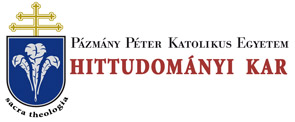Folia Canonica 5. (2002)
STUDIES - Szabolcs Anzelm Szuromi: The Development of the Clerical Orders prior to the Discipline of Statuta Ecclesiae Antique (5th Century)
FOLIA CANONICA 5 (2002) 95-105. SZABOLCS ANZELM SZUROMI THE DEVELOPMENT OF THE CLERICAL ORDERS PRIOR TO THE 5th CENTURY STATUTA ECCLESIAE ANTIQUA I. THE DEGREES OF HOLY ORDERS IN THE WRITINGS OF THE FATHERS OF THE CHURCH AND IN THE EARLY COUNCILS; II. THE ECCLESIASTICAL DISCIPLINES CONCERNING THE CLERICAL STATE, ESPECIALLY THE CANONS OF THE STATUTA ECCLESIAE ANTIQUA; III. SUMMARY. The Church understood as the New Israel assimilated numerous customs from Judaism,1 especially those related to the functions and laws of the Jerusalem temple and the cult of Jerusalem. The institution of the Church was “primitive” in the apostolic age, when the apostolic authority was basically substantial. Among the faithful there were those who had various charismatic gifts (Act. Ap. 14, 4.13; Thess. I. 2, 7; Phil. 2, 25), and then there were teachers (Eph. 4, 11), prophets (Act. Ap. 13,1; Act. Ap. 15,31; Cor. 1.14,1), and deacons (cf. Act. Ap. 6, 1-7). The bishop-priest-deacon hierarchical structure became crystallized after this period.2 The two structures -the hierarchical and the charismatic- were together in the earlier epoch, at the time of the Didache.3 The difference between the status of bishop and the status of priest was not altogether clear at that time.4 The “mono episcopatus” theory very probably appeared first in Antioch.5 Ignatius of Antioch’s letter (around 110) speaks of the ecclesiastical hierarchy, 1 Cf. P. Erdő, Theologie des Kanonischen Rechts. Ein systematisch — historischer Versuch (Kirchenrechtliche Bibliothek 1), Münster 1999. 95-106. 2Cf. A. Faivre, Naissance d’une hiérarchie. Les étapes du cursus clérical, Paris 1977. 3„IIept ôè rôv âTtoaxôAwv Kat 7ipo<j)T|x(jî>v, Kaxà tô ôôypa xoû eûayyeHou óúxa) TtoiT)aaxe' Ilâç [ôè] àTtôaxokoç èpxopevoç npôç ûp.âç ôexOpxw a>ç KÜptoç- où pevsî ôè <ei pfp* hpépav piav (...)” W. Rordorf - A. Tuilier (ed.), La doctrine des douze apôtres (Didachè) (Sources Chrétiennes 248), Paris 1978. 184. cf. „Xeipoxovfjoaxe oùv èauxoîç étuokôtiouç Kat ôiaKÔvouç öcstől)ç xoû Kupiou, cévôpaç npaeîç Kai àtfnÀapyùpouç Ka\ àÀr|0eîç Kat ôeôoKipaapevouç- 'upîv yàp Àeixoupyoûoi Kat àuxot xfjv Àeixoupyiav xwv 7ip4)r|x(î)v Kat ôiôaoKâÀwv- (...)” Rordorf - Tuilier (ed.), La doctrine (nt. 3), 192. 4 See R. E. Reynolds, Patristic 'presbiterianism ' in the Early Medieval Theology of Sacred Orders in Medieval Studies 45 (1983) 311-342. especially 312-315. 5B. Kurtscheid, Historia iuris canonici. Historia institutorum ab ecclesiae fundatione usque ad Gratianum, Romae 1951. 23-26.
